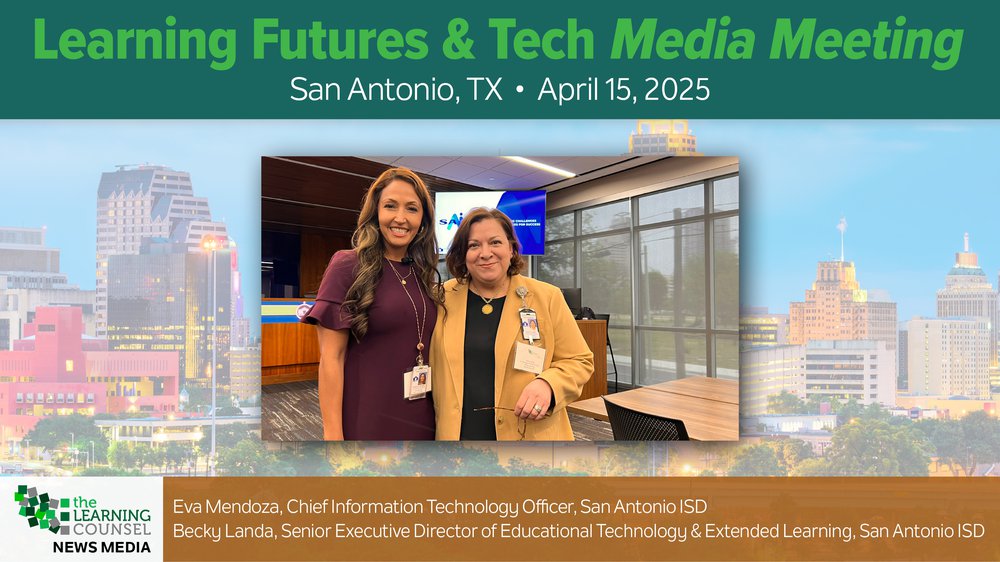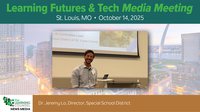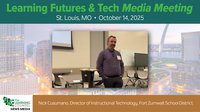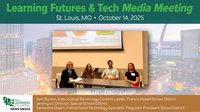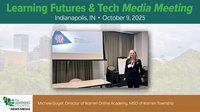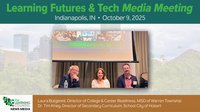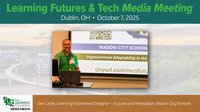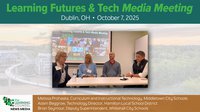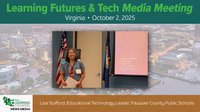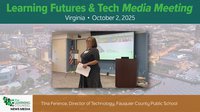At the recent Learning Futures & Tech Media Meeting hosted by San Antonio ISD, Eva Mendoza, Chief Information Technology Officer, and Becky Landa, Senior Executive Director of Educational Technology & Extended Learning, presented a compelling look at how San Antonio ISD (SAISD) is proactively navigating the complex, opportunity-rich world of artificial intelligence (AI) in education.
Eva Mendoza opened the presentation with a straightforward message: While districts across the nation may use different words to express their vision and mission, the core purpose remains the same—preparing students for life beyond graduation. But in today's rapidly evolving digital world, that preparation increasingly involves cultivating digital and AI literacy.
“AI is no longer just an IT concern,” Mendoza explained. “It’s a cultural shift that requires a collaborative strategy across all areas of the district.” Drawing a parallel to the early days of cybersecurity, she recalled how new technological challenges were often seen as IT’s responsibility alone. But with AI, SAISD has made a deliberate decision to include voices from every part of the organization—from the superintendent’s cabinet to teachers in the classroom.
At the heart of SAISD’s AI strategy is a commitment to shared leadership and inclusive planning. Mendoza highlighted the importance of a district-wide approach and praised tools like the AI Toolkit created by COSN in partnership with the Council of Great City Schools. This tool has guided SAISD’s efforts through its seven comprehensive modules, covering everything from leadership roles and legislation to technical infrastructure, data privacy, and academic application.
“It’s not just about managing the tech,” Mendoza said. “We’re talking about procurement, staffing, instructional practices, risk, security, and most importantly, equitable access.”
Becky Landa then took the stage to dive deeper into the instructional side of AI implementation. She acknowledged that while state and federal agencies have been slow to provide clear direction, the private sector—especially vendors—has been moving quickly. That prompted SAISD to form its own internal committee to assess AI tools and make informed decisions tailored to the district’s needs.
“Two years ago, we realized we couldn’t wait,” Landa said. “We needed to build internal capacity and start making decisions that reflect our students, our classrooms, and our realities.”
Landa focused on the “urban education challenge” faced by large, diverse districts like SAISD: socioeconomic disparities, multilingual learners, large class sizes, persistent achievement gaps, and the ongoing need to make instruction more relevant and engaging. These challenges make AI both a necessity and a potential solution.
For SAISD, unlocking AI’s potential starts with personalizing learning. Landa described how the district is leveraging AI to support differentiation, provide tailored feedback, and automate routine tasks—freeing up valuable instructional time for teachers. She emphasized the importance of systems that can adapt in real-time to student performance and offer actionable insights to educators.
“In districts our size, efficiency is everything,” Landa noted. “AI gives us a way to meet our students where they are and to support teachers with the tools they need to succeed.”
The duo closed their presentation with a call to action for fellow educators and administrators: embrace AI as a shared responsibility. With the right leadership, cross-functional collaboration, and a student-centered approach, school systems can transform AI from a buzzword into a real driver of educational equity and excellence.
San Antonio ISD is not only confronting the challenges of AI in education—it’s actively shaping the blueprint for how public school districts can lead with strategy, equity, and purpose in the digital age.
Tune in below for the full presentation.

